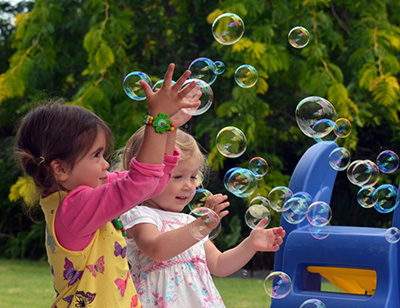Making the Most of Summer: Positive Parenting, Engagement, and Knowing When to Step Back By Dr. Deanee Johnson
Summer can be a unique and sometimes challenging season for parents and caregivers of school-age children. Without the structure of school days, families often find themselves juggling free time, fluctuating routines, and varying energy levels. This period can be one of bonding or stress and exhaustion. The key is balance: keeping kids engaged, practicing effective discipline through positive parenting, and knowing when to take a step back for your sake and theirs.
Children thrive on connection and purpose. While summer should allow for rest and freedom, it doesn’t mean abandoning all structure. In fact, predictability helps children feel safe, secure, and capable. Creating a flexible daily routine with “anchors” such as breakfast together, outdoor time, or quiet time, can help prevent endless screen time or sibling squabbles. Making learning fun through activities like cooking, hikes, or building projects can serve as teaching moments.
Many libraries and community centers offer free programming during the summer that stimulates creativity and curiosity. Encouraging hobbies and independence by giving children materials and space to explore interests—such as painting, crafting, music, puzzles, or reading—can be beneficial. Letting them choose their own “project of the week” and involving them in everyday life tasks like grocery shopping, meal planning, and chores can build responsibility, confidence, and family connection.
For families living in rural communities with limited funds, there are still many ways to engage children meaningfully during the summer. For example, organizing a scavenger hunt in the backyard or local park can be a fun and cost-effective way to keep children active and curious. Using everyday items for arts and crafts, such as making bird feeders from recycled materials or painting rocks, can stimulate creativity without requiring expensive supplies. Gardening together, even if it’s just a small patch or container garden, can teach children about nature and responsibility while providing fresh produce for the family.
One of the most common misconceptions in parenting is equating discipline with punishment. While punishment seeks to control behavior through fear or consequence, discipline is about teaching and guiding behavior toward long-term growth. Punishment often creates compliance out of fear, not understanding. It may stop a behavior temporarily but doesn’t teach a child why their behavior was inappropriate or what to do instead. Discipline, on the other hand, comes from the root word “disciple,” meaning “to teach.” It focuses on helping children understand their emotions, make better choices, and build self-control over time.
For example, if a child lies, punishment might involve sending them to their room and scolding them harshly. Discipline, however, would involve calmly explaining the importance of honesty, discussing what led to the lie, and brainstorming better ways to handle the situation next time. If a child hits a sibling, punishment might involve yelling at them and revoking TV privileges. Discipline would involve separating the children to cool down, guiding the aggressor through expressing their feelings with words, and supporting conflict resolution.
Effective discipline strategies include natural and logical consequences, such as allowing a child to experience mild discomfort (like missing a snack) if they forget their lunch, rather than rescuing them every time. This teaches responsibility. Time-ins instead of time-outs involve sitting with the child in a calming space to help them regulate their emotions, aiming to reconnect rather than reject. Redirection is particularly beneficial for younger children, guiding them away from inappropriate behavior toward something more positive or safe. Clear expectations and consistency are crucial; children should know the rules, and parents should calmly follow through on consequences. Praising effort, not perfection, acknowledges when a child makes a good choice, even if it’s small, encouraging continued good behavior.
Children are not born knowing how to manage emotions. They learn emotional regulation from observing and practicing—often with our help. Before we teach emotional regulation, we must practice it ourselves. For children, naming the feeling helps them put words to their emotions, reducing their intensity. Creating a calm-down space with books, soft toys, or art supplies where the child can go to reset—not as a punishment, but as a tool—can be helpful. Using stories and play, such as puppets, storytelling, and role-playing, can help young children work through emotional scenarios and understand consequences. Practicing breathing techniques together, like “smell the flower, blow out the candle,” can ground a child during heightened emotions.
For adults, pausing before responding and taking a few deep breaths can shift from a reactive to a thoughtful response, especially when emotions run high. Acknowledging your own feelings, such as saying “I’m feeling overwhelmed right now, so I need a moment,” teaches children that it’s okay to have big feelings and take breaks. Reflecting after difficult moments and discussing what happened and how both parties could handle it differently next time builds trust and models growth.
Children learn far more from what we do than what we say. If we want our children to be kind, patient, and respectful, we must strive to model those same behaviors—even when it’s hard. Apologizing when needed, such as saying “I’m sorry I raised my voice,” shows children that making mistakes is human and that repair matters. Speaking respectfully, even when correcting, and avoiding sarcasm, threats, or shame, breeds respect. Showing how to manage frustration by taking a break, walking away from conflict, or expressing anger safely teaches emotional intelligence.
Modeling is not about being perfect—it’s about being present, honest, and willing to grow. When children see us regulate ourselves, they learn to trust their own ability to do the same.
One of the most overlooked parenting tools is stepping back. Whether it’s to avoid escalating a conflict or to give your child the room to build resilience, disengagement—when used wisely—can be deeply constructive. Letting boredom spark creativity means you don’t need to entertain your children constantly. Allowing space for boredom can lead to imagination, independence, and problem-solving. Stepping away during power struggles, calmly stating your boundary, and taking a break can help. For example, saying “I’m going to step outside for a moment to calm down. We’ll talk when we’re both ready” can be effective.
Trusting in their growth, even when it’s hard to watch a child struggle, is important. Over-intervening can rob them of the chance to develop grit and confidence. Support them, but don’t solve everything for them.
For parents who were raised in a more strict era with corporal punishment, it’s important to acknowledge that times have changed and parenting practices have evolved. It’s natural to feel conflicted or uncertain about new approaches to discipline. Remember that positive parenting and discipline rooted in teaching, not punishment, aim to build strong, respectful relationships and foster long-term growth.
While corporal punishment may have been common in the past, research has shown that it can have negative effects on children’s emotional and psychological well-being. Embracing positive discipline strategies can help create a nurturing environment where children feel safe, seen, and guided with love.
Summer doesn’t have to be stressful. With intention, patience, and the right mindset, it can be a season of deep connection, personal growth, and joyful discovery for both children and parents. Positive parenting isn’t about perfection. It’s about creating an environment where children feel safe, seen, and guided with love. Discipline rooted in teaching, not punishment, builds strong, respectful relationships. Learning to manage emotions together strengthens the whole family unit. Above all, remember this: every difficult moment is an opportunity to model, to connect, and to show your child what it looks like to grow with grace. ❦
 About the Author
About the Author
Dr. Johnson is a distinguished leader in the field of victim services, particularly in addressing child victims of sexual exploitation and polyvictimization. As the Executive Director of Just for Kids Child Advocacy Center in Beckley and Oak Hill, West Virginia, she has demonstrated unwavering commitment to this critical area.
With over two decades of experience, Dr. Johnson has significantly impacted the field through various roles, including Survivor Specialist, Child Forensic Interviewer, and Director of both a statewide sexual assault coalition and a Court Appointed Special Advocates program. Her career began in 1999 as a volunteer mentor for adolescent sexual assault survivors in Huntsville, Texas, and has since evolved to include substantial leadership and advisory positions.
Dr. Johnson’s international contributions, such as her training initiatives with the Serbian Center on Missing and Exploited Children, and her involvement with the Department of Justice and the Vision 21 Linking Systems of Care for Children and Youth project, underscore her expertise in trauma response and adverse childhood experiences.
Her academic credentials, comprising a bachelor’s degree in criminal justice, a master’s degree in counseling, and a Ph.D. in child development, provide a robust foundation for her work. Additionally, her certifications and advanced training in child forensic interviewing and interviewing child victims of sex trafficking highlight her specialized skills.
Dr. Johnson’s dedication to advancing best practices in victim services and her collaboration with federal and state agencies reflect her profound impact on the field. Her work continues to make a significant difference in the lives of child victims and their families.
